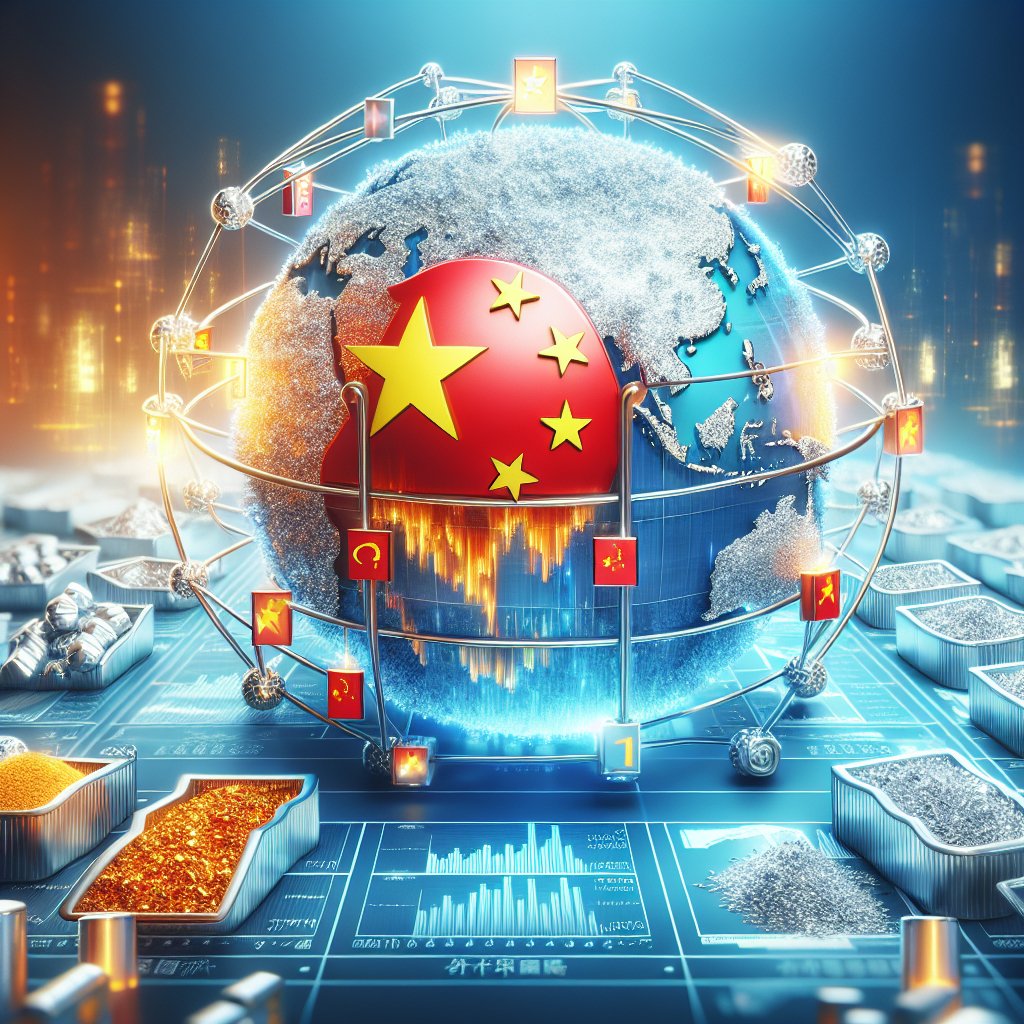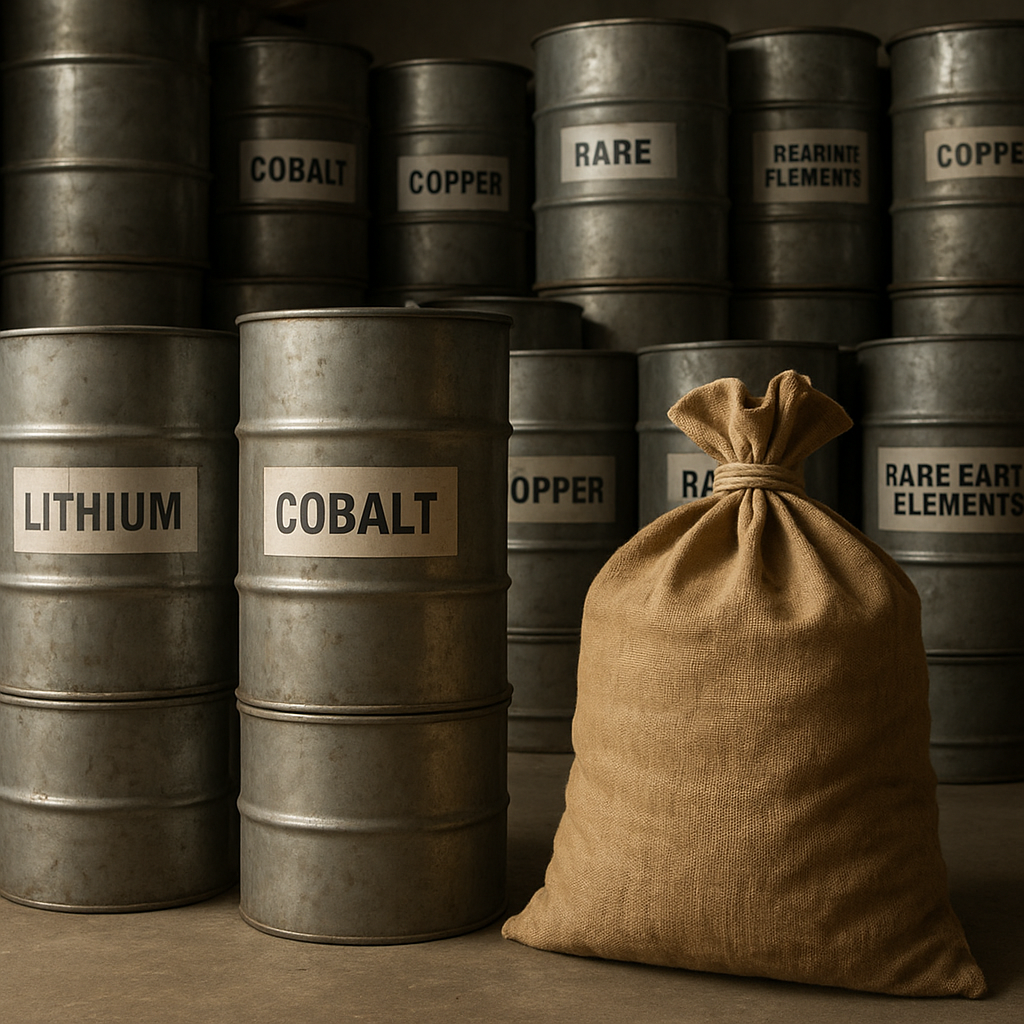The global market for rare earth metals is a critical component of modern technology, and China’s dominance in this sector has significant implications for international trade and geopolitics. Rare earth metals, a group of 17 elements, are essential in the production of high-tech devices, renewable energy technologies, and military applications. China’s control over the extraction, processing, and export of these metals has positioned it as a pivotal player in the global supply chain.
The Strategic Importance of Rare Earth Metals
Rare earth metals are indispensable in the manufacturing of a wide array of products, from smartphones and electric vehicles to wind turbines and advanced defense systems. These elements possess unique magnetic, luminescent, and electrochemical properties that make them crucial for the development of cutting-edge technologies. As the world increasingly shifts towards digitalization and sustainable energy solutions, the demand for rare earth metals continues to rise.
China’s strategic control over rare earth metals is not merely a matter of resource availability but also of technological and industrial capability. The country has invested heavily in the development of its rare earth industry, from mining and refining to the production of high-value components. This vertical integration allows China to maintain a competitive edge in the global market, ensuring a steady supply of these critical materials to its domestic industries while also exerting influence over international markets.
The geopolitical significance of rare earth metals cannot be overstated. As countries around the world strive to secure their supply chains and reduce dependence on Chinese exports, rare earth metals have become a focal point of economic and strategic policy. The United States, the European Union, and other major economies are actively seeking to diversify their sources of rare earths, investing in alternative suppliers and developing recycling technologies to mitigate the risks associated with China’s dominance.
China’s Dominance in the Rare Earth Supply Chain
China’s control over the rare earth metal market is the result of a combination of abundant natural resources, strategic policy decisions, and significant investments in technology and infrastructure. The country is home to some of the largest and most accessible rare earth deposits in the world, particularly in the Inner Mongolia region. This natural endowment has provided China with a substantial advantage in the extraction and production of rare earth metals.
In addition to its resource base, China has implemented policies aimed at consolidating and modernizing its rare earth industry. The government has encouraged mergers and acquisitions among domestic companies, creating a handful of large, state-owned enterprises that dominate the sector. These companies benefit from economies of scale, advanced technologies, and government support, enabling them to compete effectively on the global stage.
China’s dominance is further reinforced by its control over the processing and refining stages of the supply chain. The country has developed sophisticated facilities capable of producing high-purity rare earth oxides and metals, which are essential for the manufacture of high-performance products. This capability allows China to capture a significant portion of the value-added in the rare earth supply chain, making it a critical supplier to industries worldwide.
The impact of China’s control over the rare earth market is felt across various sectors. For instance, the electronics industry relies heavily on rare earth elements for the production of components such as semiconductors, magnets, and phosphors. Similarly, the renewable energy sector depends on rare earths for the manufacture of wind turbine generators and electric vehicle motors. As a result, any disruption in the supply of these materials can have far-reaching consequences for global industries and economies.
Challenges and Opportunities in Diversifying the Rare Earth Supply Chain
While China’s dominance in the rare earth metal market presents challenges for other countries, it also creates opportunities for diversification and innovation. Recognizing the strategic importance of rare earths, governments and companies around the world are taking steps to reduce their reliance on Chinese exports and develop alternative sources of supply.
One approach to diversification is the development of new mining projects in countries with significant rare earth deposits. Australia, Canada, and the United States are among the nations actively exploring and investing in rare earth mining operations. These efforts aim to establish a more balanced global supply chain, reducing the risk of supply disruptions and enhancing the resilience of critical industries.
In addition to new mining projects, recycling and recovery of rare earth elements from electronic waste and industrial by-products offer promising avenues for increasing supply. Advances in recycling technologies have made it possible to extract rare earths from discarded products, providing a sustainable and environmentally friendly source of these valuable materials. By investing in recycling infrastructure, countries can reduce their dependence on primary mining and contribute to a circular economy.
Furthermore, research and development in material science and engineering are opening up new possibilities for substituting rare earth elements with alternative materials. Scientists are exploring the use of abundant and less expensive elements to replicate the properties of rare earths in various applications. While these substitutes may not fully replace rare earths in all cases, they can help alleviate supply constraints and reduce vulnerability to market fluctuations.
In conclusion, China’s control over the rare earth metal market is a complex issue with significant implications for global trade and technology. While the country’s dominance presents challenges, it also drives innovation and diversification efforts worldwide. By investing in alternative sources of supply, recycling technologies, and material substitutes, countries can enhance their resilience and ensure a stable supply of these critical materials for the future.












